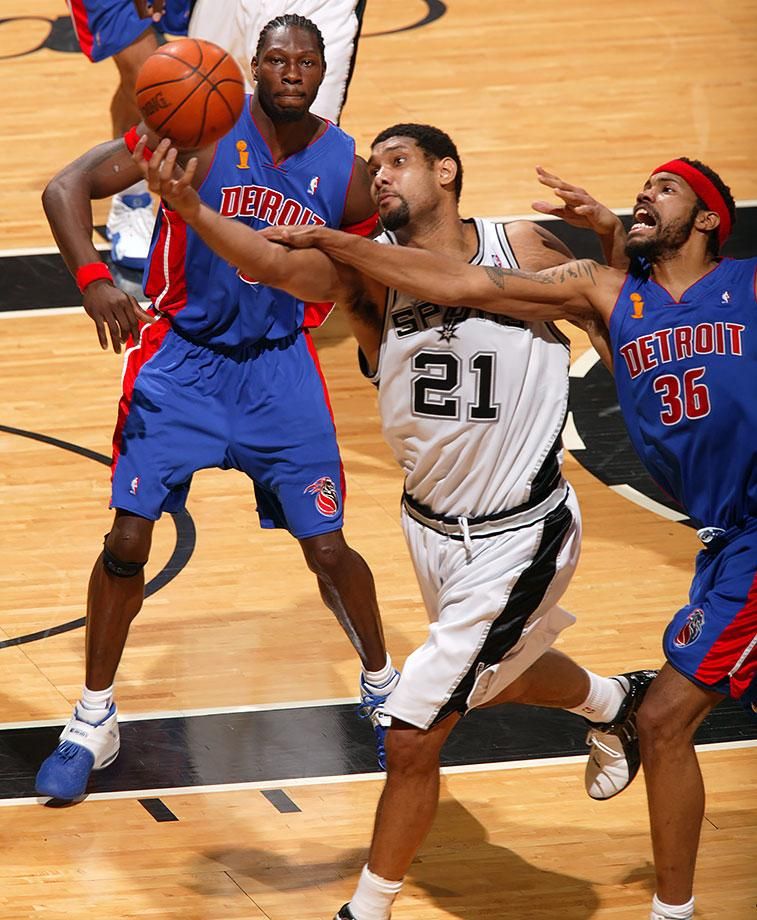Home »
Misc »
How to get a rebound in basketball
How to get a rebound in basketball
Basketball on the Edge - 10 Rebounding Tips To Help You Control The Glass
Rebounding is such an important part of the game and yet it is often overlooked when it comes to skill development. Here are ten tips that will help you become a better rebounder.
1. Box Out
So few players today box out their opponent so you will have a distinct advantage if you are willing to box out. Fight for inside position, try to make contact with your opponent first when boxing out, and then go get the ball.
2. Run hard on the fast break and get to the front of the rim.
As a youth coach, I see this all the time. A fast break results in a shot taken close to the basket. There are several players from each team jogging near half-court assuming the shot is going to go in. One player really hustles down the floor and grabs the rebound when the shot is missed. Make sure YOU are that player. All it takes is effort.
3. Don’t watch the ball.
Ignore the flight of the ball and immediately focus on getting inside position so you can box out.![]() Ball watchers get very few rebounds.
Ball watchers get very few rebounds.
4. Develop an every rebound is mine mentality.
When the shot goes up great rebounders believe they will be able to get the ball. It doesn’t matter where the ball goes after it hits the rim. They simply won’t be denied. Neither should YOU.
5. Learn the angles.
Experience will help you to better understand where the ball is going depending on where the shot came from and its arc. Establish position where the ball is most likely to end up and you’ll have the advantage over your opponent.
6. Get low, get leverage, get up.
When you are establishing position and boxing out get low with a wide base. This will give you a leverage advantage to move your opponent out of position. Finally jump as high as possible with both hands up ready to secure the rebound.
7. Don’t get caught (or pushed) under the basket.
Very few rebounds drop straight down under the basket (except those that go in). Try to establish position 3-5 feet from the rim to increase your chances of grabbing the rebound.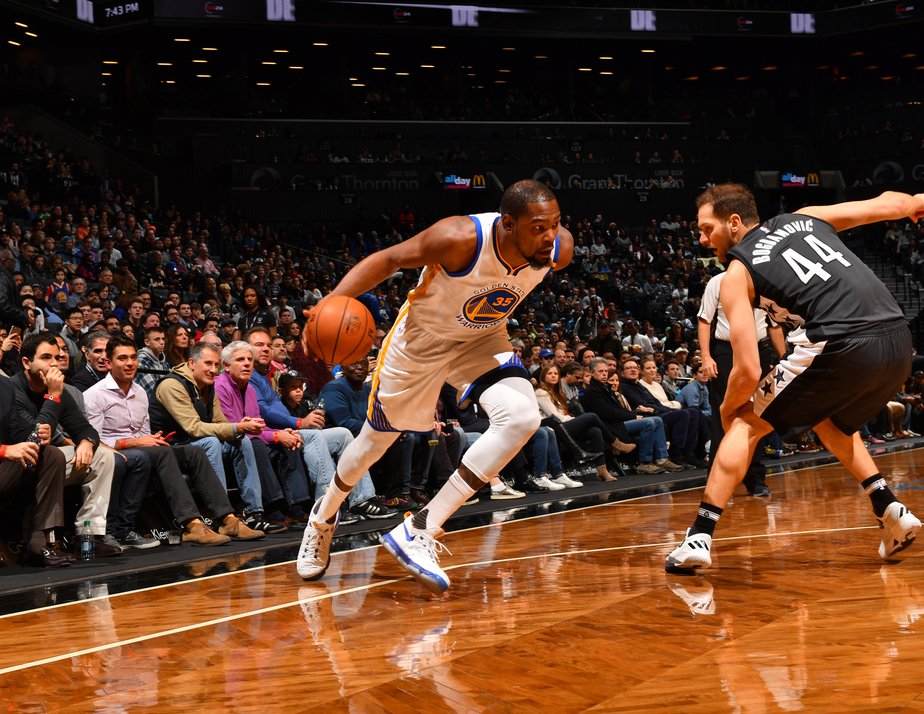
8. Keep moving.
Never stand flat-footed or straight up and down. If you are in a stance and moving you’ll be able to get into rebounding position quickly when the shot goes up. As an offensive rebounder being active means that your defender doesn’t always know where you are or from what angle you may be crashing the boards.
9. Chin the ball after you rebound.
Don’t work hard to get the rebound and then have it stripped out of your hands because you lazily put the ball down by your waist. Put the ball under your chin with your elbows out. A would-be defender will think twice about reaching in if you are “chinning” the ball.
10. You can’t be Mr. Nice Guy.
Rebounding is messy business. You must be willing to mix it up , both giving and receiving a lot of physical contact. An aggressive player will always have the edge on the passive player.
Many coaches cite rebounding as a critical skill that often determines the outcome of a game.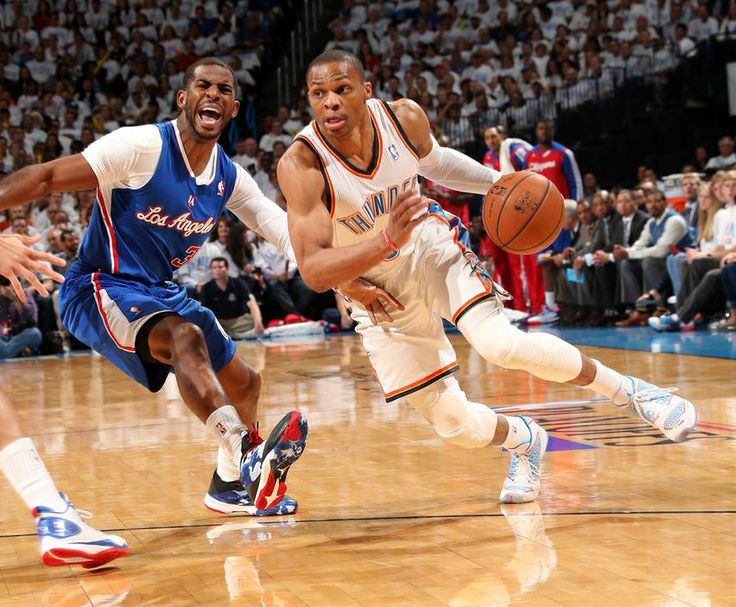 Coaches love players that can rebound. You will never hear a coach say, “Klinzing! You are getting too many rebounds!” Few players really focus in on what it actually takes to become a great rebounder at any level of basketball. Follow these ten rebounding tips and be prepared to dominate the backboards on both ends of the floor.
Coaches love players that can rebound. You will never hear a coach say, “Klinzing! You are getting too many rebounds!” Few players really focus in on what it actually takes to become a great rebounder at any level of basketball. Follow these ten rebounding tips and be prepared to dominate the backboards on both ends of the floor.
Leave us a comment about this post [email protected]
Sign up now to get a “Head Start” on your competition with our free basketball tip of the day delivered straight to your inbox. Click below, enter your email and we’ll also send you our E-Book, “Mental Toughness, Improve Your Brain – Improve Your Game”.
Free Tip of the Day!
5 Keys to Becoming a Great Rebounder in Basketball
This article was written by Kyle Ohman.
1. Rebounding Desire
- Mentality
- The first thing that every great rebounder must have is the right mentality. Rebounding must be a conscious choice that you make as a player.
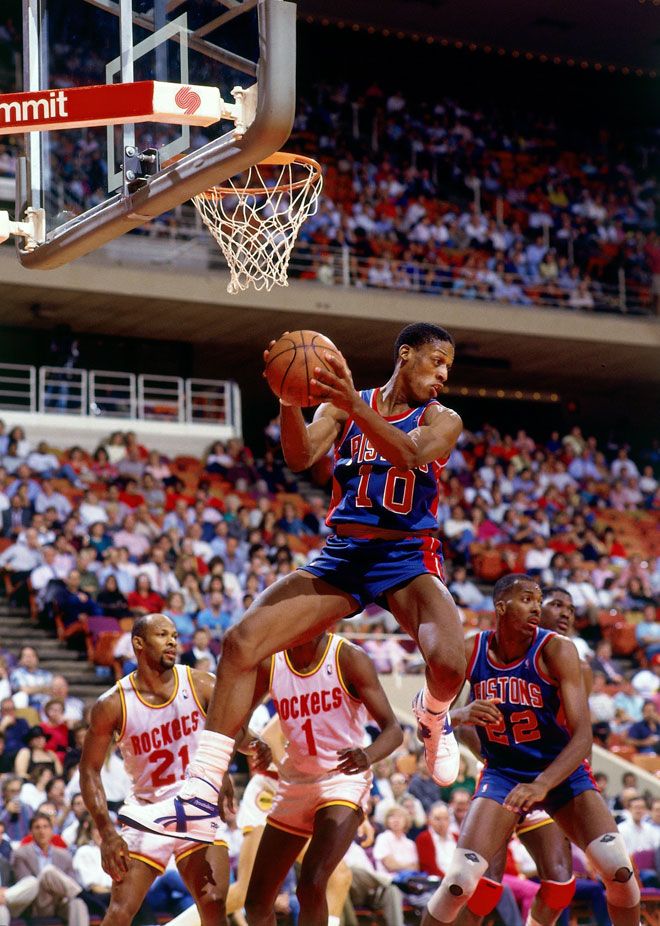 You must decide to give maximum effort every time that a shot goes up. There are no plays off when it comes to being a great rebounder.
You must decide to give maximum effort every time that a shot goes up. There are no plays off when it comes to being a great rebounder.
- Outwork
- It is not always about size, but how much you are willing to work to get the ball. If you are willing to do your work early and finish all the way through to the rebound, you will give yourself a great chance of getting the ball, regardless of size.
2. Rebounding Technique
- Defensive Rebounding
- Along with desire, rebounding the basketball has a lot to do with technique. The better a player’s technique is, the better a rebounder they will become.
- Forearm: The first thing that you must do when the shot goes up is to locate the offensive player with your forearm. If you try to go straight for the box out, you will allow the player to fake one way or the other and potentially get around you. A forearm to the offensive player’s chest allows you to locate and stop them as you go into your box out motion.

- Hip/Butt: You mustn’t allow the player to break contact with you after the forearm by immediately putting your hip/backside on them and driving them backward with a low strong base. If you have good positioning, the offensive player may try to drive you under the basket to take away your rebounding angle. So make sure that you keep this low strong base and drive them back instead of being driven forward.
- Hands Wide: Keep your hands up as you box out; a good visual term for this is “thumbs in your ears.” This will help with a few different things; it will make you wider and harder to get around, it will keep you from reaching and grabbing the offensive player – which could be called for a foul, and it will allow your hands to be quicker in reacting to the basketball as it comes off of the rim.
- Offensive Rebounding
- Depending on your location when the ball goes up, you will have different strategies on what type of move you use to get the offensive rebound.

- Close to the Basket: If you are already close to the basket and the defender has inside position on you, then try to drive them under the basket so that they do not have a good angle once the ball comes off the rim. Don’t extend your arms when driving them under the basket. Instead, use your legs to generate force and leverage to drive them under the basket.
- Away From the Basket: If you are out away from the basket and your defender has good positioning, you will want to try to use a swim move or a spin move to get past them. The key to this type of move is not to let them make solid first contact with you. Fake one way to get them to shift, and then make your move past them the other direction.
- Inside Position: If, for some reason, you have an inside position when the shot goes up, treat it just like a defensive box out.
3. First to React the Rebound
- Locate the Ball
- The player that can locate the ball first will be at an advantage and will be able to make the first move to the ball.
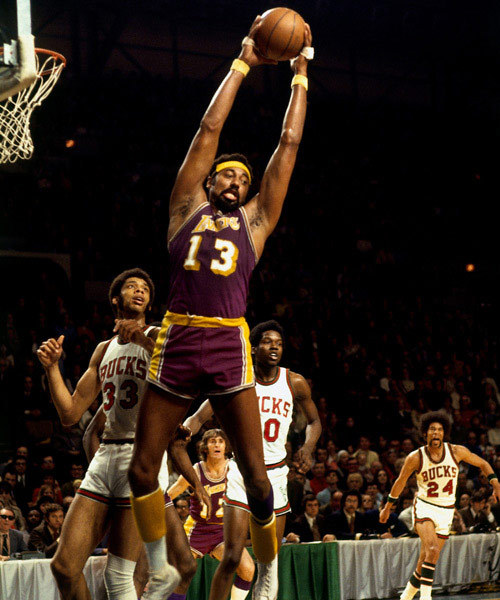 So it is important that you can quickly locate the ball as it comes off the rim.
So it is important that you can quickly locate the ball as it comes off the rim.
- Release to the Ball
- If you are in a defensive box out, don’t wait for the ball to drop down to you. As soon as you locate the ball off the rim, you need to release from your box and pursue the ball.
- Percentages
- Depending on where and what type of shot is taken, the ball will have a higher percentage of bouncing off the rim either; long, short, hard, or soft.
- Misses from the wing and corner areas have a higher percentage of bouncing off the rim long.
- Long-range misses typically mean longer rebounds.
Related Basketball Rebounding Drill: Reaction Rebounding Drill
4. Out of Area Rebounding
- Pursue
- Be willing to pursue the ball out of your area. Rebounds are not always going to drop right into the spot you are boxing out at; you need to pursue the ball when it is out of area.

- Highest Point
- Don’t let the ball drop down to you, but go up and get it at the highest point possible for you. The longer you wait on the ball, the more chance you give other players to get their hands on the ball.
- Tip Outs
- There are going to be times when the ball is too far out of area to be able to grab and pull in. This is a great chance to tip the ball to yourself or out to a teammate.
- Defense: You may not always be able to corral the board, but if you see a free teammate, you may be able to tip them the ball so that they can control it.
- Offense: If you are not able to control the board, you should, if possible, be trying to tip the ball out to a good shooter on your team. One of the best times to shoot a 3 pointer is after an offensive rebound kick out, or in this case, a tip out.
Related Basketball Rebounding Drill: Superman Rebounding Drill
5. Finish the Play on the Boards
Finish the Play on the Boards
- Two Hands
- Your goal when rebounding the basketball should always be two hands. This makes you stronger with the ball and will help to keep your opponent from wrestling the ball from your grip.
- There will be times that you can only get one hand on the ball, but you want to try and use two hands if possible. Here is a great basketball rebounding drill for working on one-handed rebounds in traffic: Kevin Love Rebounding Drill.
- Chin the Ball
- Defense: Getting your hands on the board is great, but you need to complete the play by bringing the ball into a place of strength. If you are a post player, you want to also be thinking about being able to outlet the ball as well once you have secured the board.
- Offense: When you get an offensive rebound, it is important that you chin the ball and don’t bring the ball down to where small guards can reach in and strip the ball.
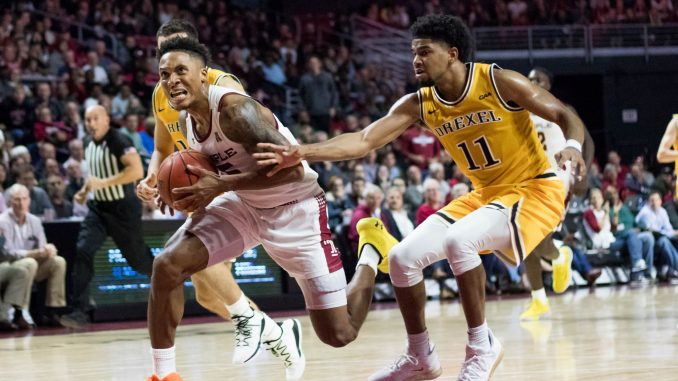 Keep the ball high where you can be strong with the ball and then finish if there is an opportunity.
Keep the ball high where you can be strong with the ball and then finish if there is an opportunity.
Rebounding is not seen as glamorous, and it may not be appreciated as much as it should be by most fans. Still, it absolutely has a direct correlation to winning basketball games. Controlling the boards finishes defensive possessions and creates second-chance points on the offensive end. Just look at the value that a player like Dennis Rodman added to the Bulls and the Pistons in his playing career.
Having a player who buys into being a great rebounder can directly impact a game or an entire season. Being a great rebounder is not a once in a while thing, though. It is competing and executing great technique on every shot that goes up. It is controlling the glass and setting the tone for an entire team.
Great rebounders are contagious. They not only do a great job of rebounding for themselves, but they also inspire other teammates to compete on the glass.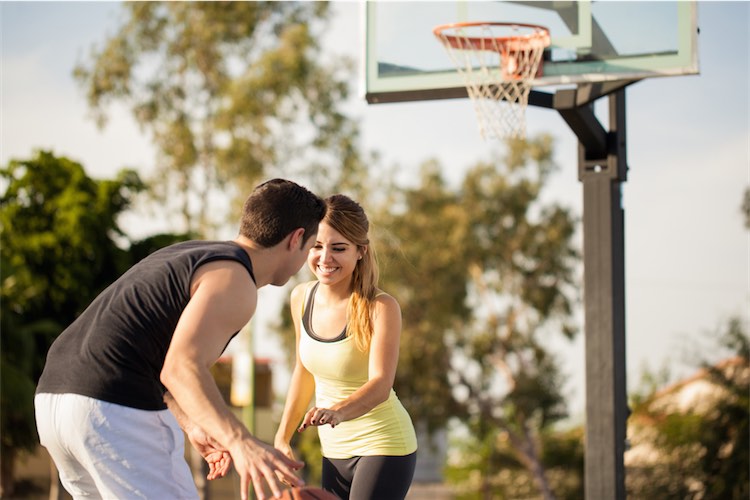 Teammates see how hard the player is working on the glass, and before you know it, you have an entire team of players that take pride in rebounding and dominating the glass every game; this type of play turns into wins.
Teammates see how hard the player is working on the glass, and before you know it, you have an entire team of players that take pride in rebounding and dominating the glass every game; this type of play turns into wins.
If you want to be a great rebounder, you have to be willing to put in the work. It takes time to develop great rebounding technique, being able to locate the ball quickly, and then finish the play. This means time spent in the gym, specifically working on rebounding. So start adding value to your game and your team by becoming a great rebounder.
Challenging the ball on the rebound | Jumping
2. Challenging the ball while rebounding from the backboard . The fight for the ball when rebounding from the backboard in defense is described in the chapter "Individual defense". Techniques and starting positions used in the fight for the ball bouncing off the shield or ring, in defense and attack, despite some common features, are different.
Technique for taking possession of the ball after bouncing off the backboard. The two most important principles for handling the ball after bouncing off the backboard are balance and timing. In order to maintain balance in the crowded area under the basket, the attacker must have a wide and secure footing. The legs are placed as wide as possible, slightly bent at the knees, the pelvis is lowered, the back is rounded. The elbows are held wide at shoulder level, the shoulders are parallel to the floor, the forearms and hands are raised up. Fingers wide apart, palms facing the basket. The body is slightly inclined forward, the weight of the body is distributed on the balls of the feet.
When fighting for a ball that has bounced off the backboard, the calculation of the jump is even more important than the height. The calculation of the jump depends on the height and direction of the ball bouncing, which in turn are determined by factors such as the trajectory and distance of the throw, the ball hitting the backboard or basket hoop, the resilience of the backboard and basket hoop, and the spin of the ball.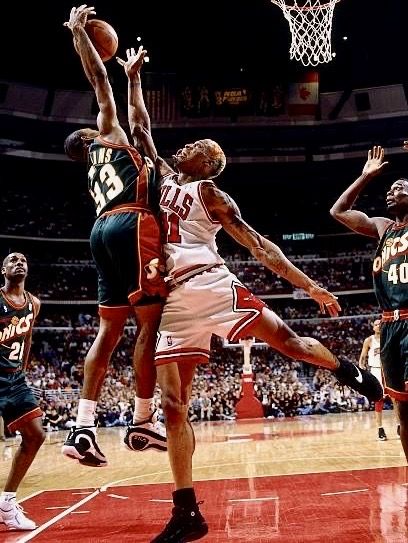 Taking all this into account when calculating the jump, the player jumps up, trying to finish the ball, throw it back or catch it with two hands. If he decides to catch the ball, he must do so at the highest point of the jump, in a split-legged position with elbows wide apart, with the pelvis pushed back for maximum cover of the ball. By turning the ball in the air to a position where one arm is down and the other is up, the player lands with legs and elbows wide apart, with a lowered pelvis that is set back. (A taller player may land in a more upright position where the ball is held high to complete either a second shot or a pass faster.)
Taking all this into account when calculating the jump, the player jumps up, trying to finish the ball, throw it back or catch it with two hands. If he decides to catch the ball, he must do so at the highest point of the jump, in a split-legged position with elbows wide apart, with the pelvis pushed back for maximum cover of the ball. By turning the ball in the air to a position where one arm is down and the other is up, the player lands with legs and elbows wide apart, with a lowered pelvis that is set back. (A taller player may land in a more upright position where the ball is held high to complete either a second shot or a pass faster.)
When lowering the ball to the chest, the player avoids dropped balls by using quick feints and turns combined with a pass, throw or pass. A hasty throw or throw from an unbalanced position should not be performed. The ball that bounced off the backboard must be handled as if it were in possession of the ball in the field. If an opportunity to throw is presented, it must be seized immediately; otherwise, the ball must be moved back and the game combination started.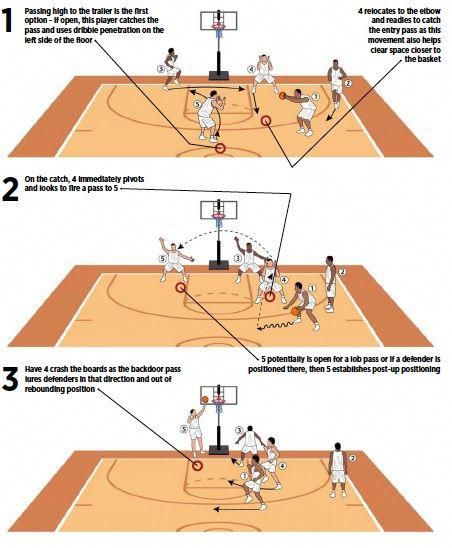
Tactics of fighting for the ball bouncing off the backboard. Many coaches spend a lot of time learning how to tackle the ball from the backboard or rim to the defense and underestimate learning how to do it offensively. Since only a few teams convert half of their shots, the chance of losing the ball on a shot can become greater than the chance of taking the basket. Therefore, the fight for the ball, rebounded from the shield, in the attack cannot be left to the mercy of fate, and it needs to be given as much attention as defensive techniques.
Although defenders usually take an inside position at the backboard, attackers have several techniques that can neutralize this positional advantage. First of all, knowing the moment when the partner is most likely to throw, the attacker can use an instant advantage and thus prevent the blocking. The defender cannot get into position to tackle the bounced ball until after the shot has been made, as a premature turn to the backboard poses a danger of taking the basket using a pass.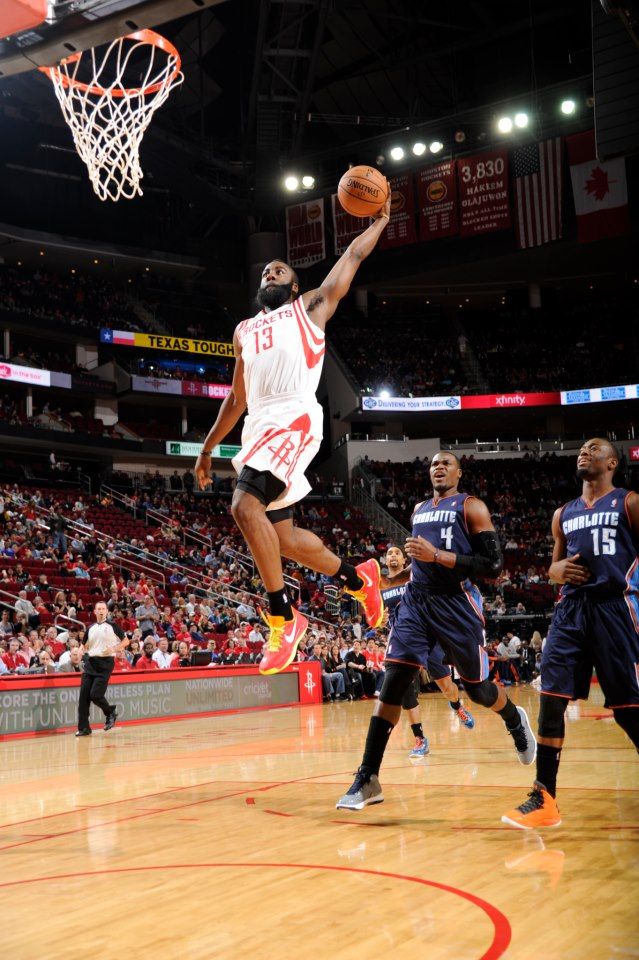 On the other hand, the attacker's partners know his throwing habits all too well, which allows them to intuitively position themselves as soon as the partner begins to prepare for the throw. In addition, the attacker's partners, knowing better how the ball "behaves" when it is thrown, must be ready and adapt to the shots when advancing to the basket.
On the other hand, the attacker's partners know his throwing habits all too well, which allows them to intuitively position themselves as soon as the partner begins to prepare for the throw. In addition, the attacker's partners, knowing better how the ball "behaves" when it is thrown, must be ready and adapt to the shots when advancing to the basket.
Finally, the attacker can put pressure on the defender to affect his timing and balance. In this case, if the attacking player feels the resistance of the defender, he can hold or increase the pressure and then suddenly slide out, causing the opponent to lose his balance.
The effective use of pressure with the torso, legs, shoulders and elbows can psychologically throw the opponent off balance. The fight for the ball that bounced off the shield is carried out in a zone where various kinds of contact are made. An aggressive attacking player can do a lot to make up for shortcomings in height or position.
The attacking player also has the advantage of not trying to get hold of the ball with both hands. This allows him to get closer to the backboard, from where it is more convenient to finish the ball into the basket. Even if the rebound is ineffective, the attacker or his partner may get a second opportunity to get the ball, hit it, or kick it to one of the back players in the free-throw area circle. Success under the backboard often depends on the attacking team's ability to keep the ball in play until a basket attempt is successful or one of the players has it. After each jump, the attacker must land on the balls of the feet, with the pelvis down and arms up. If necessary, he must be ready for the second, third or fourth jump. Determination is an advantage in itself.
This allows him to get closer to the backboard, from where it is more convenient to finish the ball into the basket. Even if the rebound is ineffective, the attacker or his partner may get a second opportunity to get the ball, hit it, or kick it to one of the back players in the free-throw area circle. Success under the backboard often depends on the attacking team's ability to keep the ball in play until a basket attempt is successful or one of the players has it. After each jump, the attacker must land on the balls of the feet, with the pelvis down and arms up. If necessary, he must be ready for the second, third or fourth jump. Determination is an advantage in itself.
Often a game combination causes a defender to leave his player at the moment another attacker is throwing. For example, a long-range shot from the opposite side of the court can cause a defender guarding a player without the ball to move to the free-throw area to help a teammate defend. The freed attacker must be able to move into a comfortable position at the backboard without the risk of being blocked.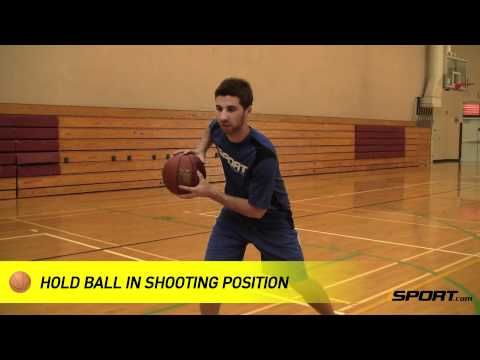 Even if he cannot get to the shield before the defender, he must at least take a position close by. If, in addition, the post player also gains a positional advantage when the defender plays in front of him, the attacking team will be in an excellent position to control the ball on the rebound.
Even if he cannot get to the shield before the defender, he must at least take a position close by. If, in addition, the post player also gains a positional advantage when the defender plays in front of him, the attacking team will be in an excellent position to control the ball on the rebound.
types, passing technique, how to catch the ball
Home / All sports / Passing the ball in basketball: types, passing technique, how to catch the ball
04/03/2020 All sports Leave a comment 60,598 Views
Share with friends
Basketball is a team sport. It follows from this that all team members must be involved in the game process and work as one single mechanism. One of the main skills in basketball is passing, which, by the way, many underestimate and spend little time in training on improving it.
When teaching catching and passing the ball in basketball, it is important that the coach/teacher focuses not only on the technique of performing the skill, but also on the mentality.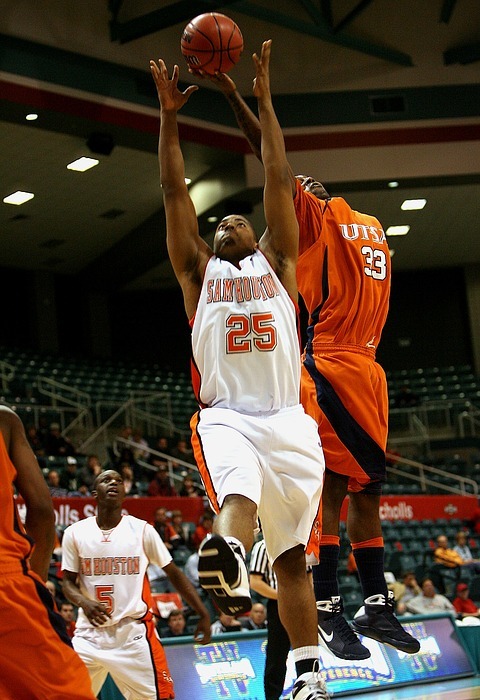 It's just that some novice players believe that the pass should be done when they do not have the opportunity to throw into the ring, although this opinion is erroneous, because the transfer, especially done wisely, brings the team much closer to success.
It's just that some novice players believe that the pass should be done when they do not have the opportunity to throw into the ring, although this opinion is erroneous, because the transfer, especially done wisely, brings the team much closer to success.
When teaching the passing of players of the younger group, it is worth considering their physical and mental characteristics. Small basketball players usually do not have enough strength to perform an accurate technically correct pass. In addition, do not forget that the skill of a good pass is developed with experience, and at the initial stage they simply do not have it. Beginners will naturally have many mistakes when passing, especially when passing the ball with one hand, with a bounce, as well as passing in motion. But through trial and error, this technical skill can be gradually improved. A coach or physical education teacher should tell his students about this so that they do not get upset when nothing works out.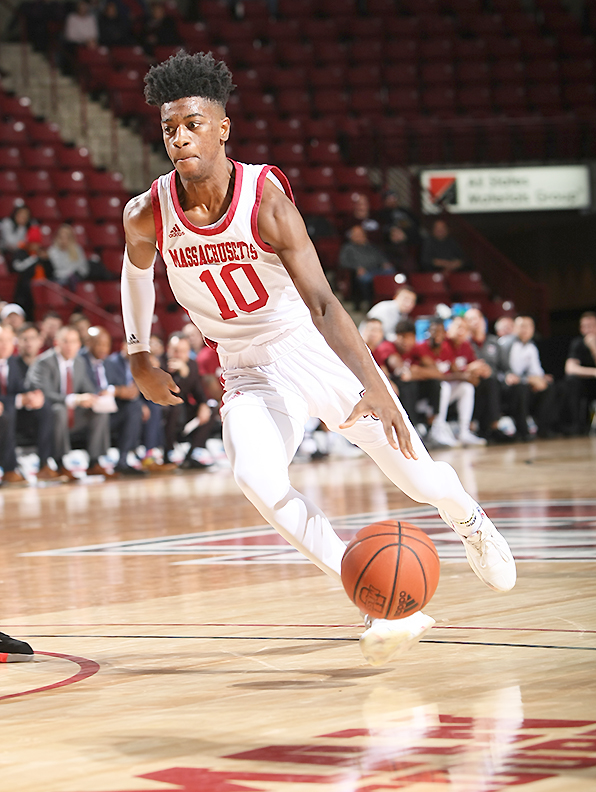
How many players are there in basketball? Positions of players and their meanings
What are the types of passes in basketball?
Basketball passing is a fundamental skill that players need to practice regularly. Teams that rely on the skill of individual team members will find it difficult to score high against a well defending opponent. In basketball, passes can be classified into:
Also split gears:
But the main classification into species is the following type:
- Two-hand chest pass
- Bounce pass
- From behind the head
- Other types: side, bottom, hand-to-hand, shoulder pass, baseball pass, behind the back, concealed, in motion.
Below is a summary of each major type of pass, detailing how and when a particular pass is made. It’s worth clarifying right away that two hands are used to pass from the chest and from behind the head, so it’s best to start teaching beginner players from them.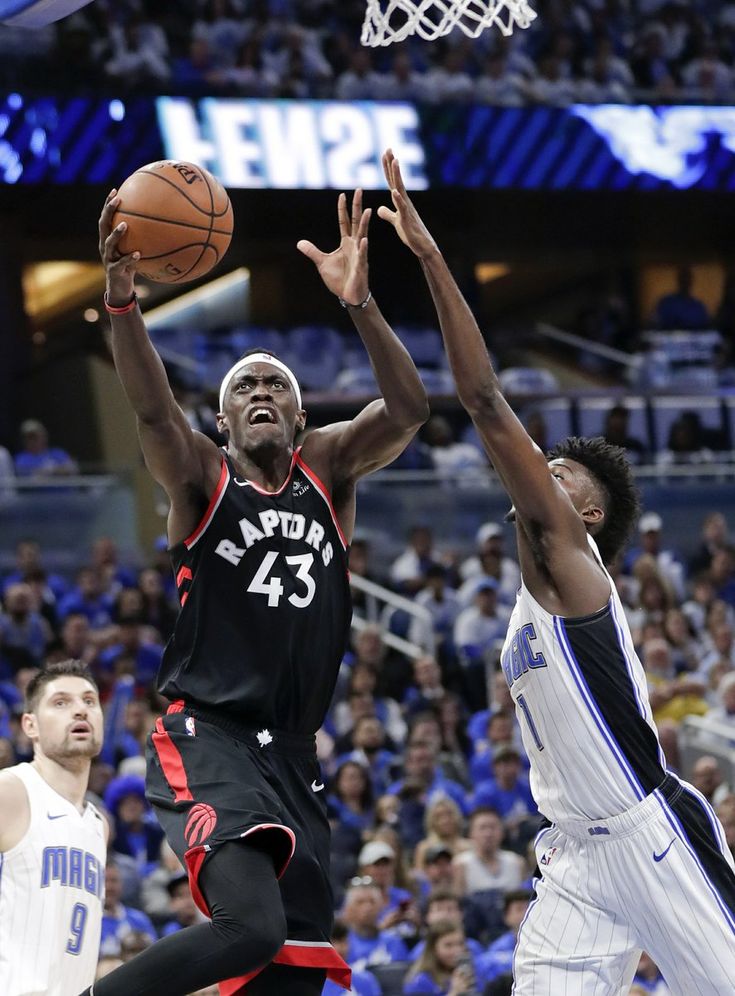
Chest pass
This is the most common and most effective pass in basketball. It can be used in most different situations and places in the playground. To perform a chest pass, place your hands evenly on both sides of the ball and spread your fingers (thumbs pointing towards the chest). We hold the ball near the chest and in order to pass to the partner, fully extend the arms forward, thus pushing the playing projectile towards the partner. In this case, the palms of the hands turn around and look at each other with the outside, and the thumbs are pointing down (see the picture).
If the situation allows, try stepping one foot forward towards the partner you are about to pass to. Ideally, you need to throw the ball to your partner so that it hits just below the chest - in this case, it will be very convenient for the player to receive it.
Bouncing pass
To perform such a pass, you need to do all the same actions as when passing from the chest, only you need to direct the ball to a partner with a hit on the floor.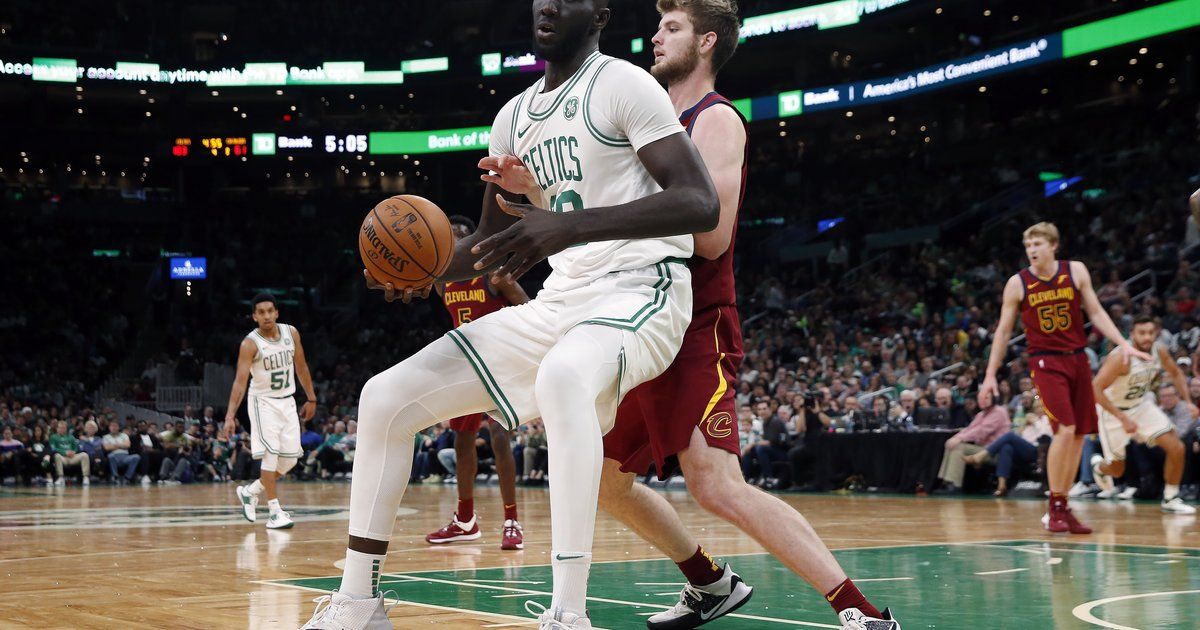 Also, if there is time, take a step forward and throw the ball at a distance of about 2/3 from the partner so that it flies above the knees to the waist area. Passing accuracy requires practice, as beginners often hit the ball in the wrong place and it does not fly accurately.
Also, if there is time, take a step forward and throw the ball at a distance of about 2/3 from the partner so that it flies above the knees to the waist area. Passing accuracy requires practice, as beginners often hit the ball in the wrong place and it does not fly accurately.
Do not forget that the transfer of the ball with a rebound is slower than from the chest through the air, which makes it possible for other basketball players to intercept. Therefore, such a delivery of the ball must be carried out with caution, calculating the time and place of the ball's flight.
Overhead pass
This type of pass is used in situations where a player is driven into a difficult position and there is nothing left to do but to pass the ball to a partner in this way. To perform, you need to put your hands on the sides of the ball, spreading your fingers, then raise the ball behind your head and straighten your arms and take a step forward to the intended place of the transfer to release the game projectile from your hands (if the situation does not allow you to put your foot forward, we pass without this action).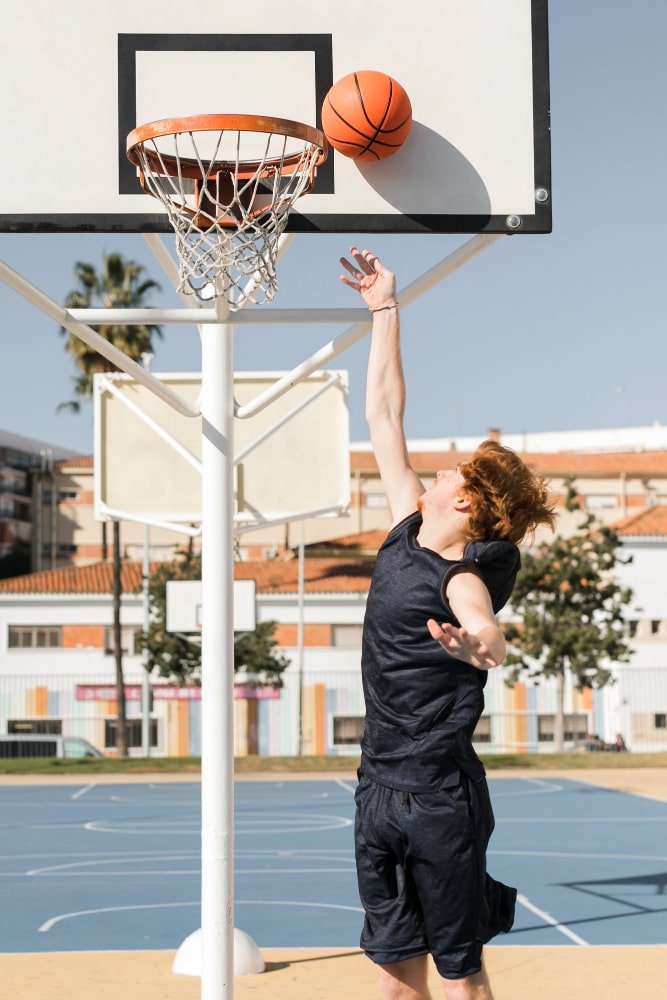
Other interesting passes
Baseball passing. This option is used in rare cases when it is necessary to quickly make a long pass, for example, from your own half of the court to someone else's. Passing is like throwing a baseball player on a shot. To make such a pass, you must first take the ball with both hands and place it near the shoulder near the ear. The body of the body is half deployed. Then, with one hand, make a pushing motion: the hand should follow the ball, stretching to its full length, and the last touch is made with the fingertips.
Hidden transmission. It can be used to confuse the opponent's defense and is especially effective when passing on the move while dribbling. Often such a pass is used by the point guard. It is extremely difficult and in most cases performed by professional basketball players. The pass is difficult to execute because the player needs to look in one direction while throwing the ball in another direction. The situation is complicated by the speed of the player's movement and the number of opponents nearby. You need to give such a pass according to the situation: with one hand, two, with a rebound or in another way.
The situation is complicated by the speed of the player's movement and the number of opponents nearby. You need to give such a pass according to the situation: with one hand, two, with a rebound or in another way.
Back pass. Such a passing of the ball in a basketball game will make the audience rise from their seats and thank its author with loud applause. There is a problem with this type of pass and not every player will be able to perform it qualitatively, especially it is not recommended to make such a pass for beginners. Often, a pass behind the back is performed at high speed, when two attackers go to one defender, and when the opponent goes to attack the one with the ball, he gives the game projectile to his partner. The picture below clearly shows how this ball pass is performed.
Free throw training
10 Basketball pass tips
Successful teams work hard on the court, using every player on the field to reach their goal. There are 5 people in a basketball team and together they can play a combination at someone else's ring better than players working individually. It follows from this that the passing is an extremely important technical element in basketball and it needs to be trained and improved. Here are some tips for beginners to learn how to pass the ball well:
There are 5 people in a basketball team and together they can play a combination at someone else's ring better than players working individually. It follows from this that the passing is an extremely important technical element in basketball and it needs to be trained and improved. Here are some tips for beginners to learn how to pass the ball well:
- Take one small step towards the player you are passing the ball to. This will improve accuracy.
- Pass as far away from the defensive player as possible to avoid interception.
- Deliver the ball to your partner above the waist and below the shoulders for a comfortable reception.
- Make sure that at the last moment of farewell to the ball, it slips out of the fingers, and not out of the palms.
- Keep track of the situation on the field, assessing the location of opponents on the court and your players.
- When dribbling, look at the court, not at the ball.
- When passing from the chest, be sure to rotate the wrist at the end.

- Use maximum passing speed without sacrificing accuracy.
- The passing of the ball must be both crisp and precise, not too soft and not too hard. Make sure that the partner does not have difficulties in receiving.
- A fake pass occurs when you are sure that the opponent will not intercept it and start a retaliatory attack.
Basketball Catching Tips
When a student first learns to play basketball, one of the elements they encounter at the very beginning is catching the ball. Basketball is a complex and dangerous sport. It will hurt if someone cannot catch a sharply thrown ball. Therefore, before a player is hit in the face or another part of the body, make sure that he has and sufficiently developed skills to catch the ball. Here are some tips for catching the ball in basketball:
- Show the thrower where you want to get the ball by extending your arms above your waist with your fingers relaxed and apart.
